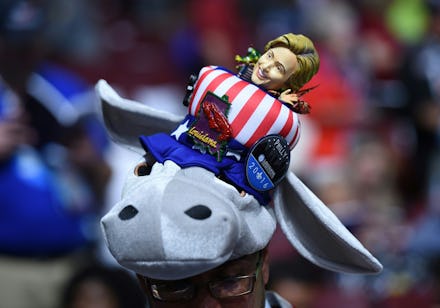The curious reason why a donkey came to symbolize the Democratic Party

For nearly 200 years, the Democratic Party has been closely associated with a noble if underappreciated beast: the donkey.
While the donkey does not appear in the party's official logo, the animal is frequently used as a stand-in for the party in political cartoons, TV advertisements and popular culture.
But how did the donkey come to represent the nation's oldest political party? What are the origins for how the two became so closely associated?
The first instance of a donkey being associated with Democrats came during the 1828 presidential election. During Andrew Jackson's campaign — marred by vicious personal attacks and accusations of stubbornness —his opponents called him a "jackass," and the young nation's political cartoonists eventually caught on. But Jackson turned the label around on his opponents, embracing the donkey as a tough and sturdy symbol of himself throughout his presidency.
After Jackson left office, the donkey took a hiatus from politics. But Harper's Weekly cartoonist Thomas Nast revived the symbol in 1870. By that time, Nast was nationally renowned for the pro-Union and anti-slavery cartoons he penned during the Civil War. Nast revived the donkey to represent northern Democrats who had opposed the war and Reconstruction, which he saw as dishonoring President Abraham Lincoln's legacy.
While the Democratic Party never officially adopted the donkey as its symbol, Nast's popularization of the image stuck. The symbol of a donkey and the Democratic Party is everywhere, from campaign imagery to paraphernalia at the party's quadrennial national conventions.